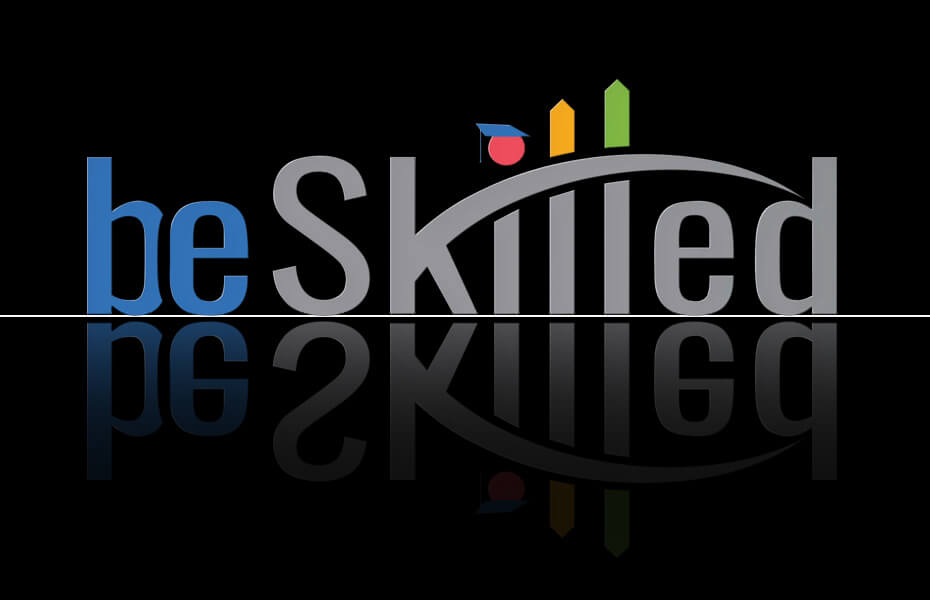A logo acts as more than just a simple symbol to identify a company or business. It’s an important part of brand identity. The perfect logo has the power to evoke strong emotions. The hurriedly created logo could come off as sloppy and unprofessional. It might have a big impact on your company.
An effective logo can definitely assist a business in bringing in new clients, as opposed to the converse of a poor one. This is due to the fact that the company logos would be printed on name cards, flyers, and other printed products. As a result, logos are utilized as a visual representation of the company’s complete identity. Logos are virtually ubiquitous in the corporate sector.
Furthermore, having a good logo implies a level of polished skill and capacity. It may influence potential new consumers to choose the business over a competitor with no logos or with substandard logos.
Small businesses frequently take shortcuts with logos, paying close attention to their legal size and positioning and encircling them with elements such as clipart.
So, everyone should understand the importance of logo design, which is branding your business. If you want to make an impact on your consumer’s minds, you need to be serious about making your business logo.
What is a logo?
A logo, in its most basic form, is a symbol composed of words, images, and colors that are used to identify a business or product. Logos exist in a variety of shapes and sizes, ranging from simple text logotypes to complex 3D logos.
Unbelievably, the concept of a logo dates back thousands of years. Take a look at the rudimentary symbols that early humans used to communicate in their basic cave drawings.
A logo, in the most basic sense, identifies. It affects how people perceive and remember your business. It serves as the public face of your company as well.
Table of Contents
ToggleTypes of Logo
You can not define the classification of a logo properly. A logo can not be classified because it is designed with your service, profile, or portfolio. Generally, we can see different styles of making the logo. Some of them are described below:
A Trademark Logo: Brand marks, also referred to as “pictorial marks,” are the visual image of a logo. These symbols typically have a well-known meaning and help your audience make a quick connection.

Wordmark Logo: Some companies choose to prominently display the name of their business or group in the absence of a graphic symbol. Typography is everything in this scenario. Whatever font you choose, it must be legible.

A Combination Mark Logo: This logo is combined with symbols and word marks. It creates a “lock-up” that is aware of us. Here you can consist of the company’s name, tagline; and use the product type symbol.

Letter Mark Logo: A letter mark, often known as a “monogram” logo. If your company name is long, you can use this type of logo. You can either use your initials or a short form of your name. A letter mark’s typography is just as significant as a word mark’s. You can make your logo more creative with fewer letters.

Abstract Logo: Abstract logos tend to be more geometric and less recognized. They’re excellent if you want something wholly distinctive for your brand. Until established enough brand recognition to enable your symbol to stand alone, we strongly suggest matching these symbols with the name of your business or organization.

Mascot: A mascot could be enjoyable depending on the personality of your brand. Just make sure your writing style matches the sentiment and message you wish to convey. Mascots are a poor choice if you’re trying to project a more somber atmosphere.

Emblems: Emblem logos contain words within a symbol. Emblems, often known as “crests,” have long been used to represent tradition and prestige.

What is the function of a logo?
The main function of a logo is to define the service of the company, but it does more than that. Let’s look at what a logo may achieve for your company or personal brand.
Create an initial impression
You only have one chance to make a positive first impression. A logo is an excellent technique to create one that stays in your customer’s minds and piques their curiosity.
Create a unique brand identity
Everyone desires a distinct and unified appearance for their business logo.
It makes it clear right away what your brand represents and how people will see it. This is referred to as your brand identity, and it describes the unique visual identity that will emerge for your company.
Increase brand recognition
As your brand expands, so does your logo, becoming more recognizable to your audience and the world. A logo promotes your brand to the audience. Generally, the logo consists of a banner, placard, and product sticker. The consumer always sees the logo of your business when using your products. So, it has a huge impact on increasing your brand image.
Make you stand out from the crowd
In order to stand out from the competition and solidly position your brand, you can accomplish this by investigating their branding strategies. You can achieve this by researching the competitors. Their branding sets you apart and firmly establishes your brand.
Develop a strategic branding tool
It is essential to establish a brand strategy that clearly states your values and objectives. A fundamental component of this strategy is that it can convey your brand’s message across marketing media. Your logo can be utilized on your website, social media platforms, business cards, packaging, and other venues.
Improve your message
Without using words, a logo is a powerful way to tell customers about your business. One basic sign can express your company’s niche, the sort of service you provide, brand values, and general tone.
Importance of logo design
Exposes your true identity: Your logo shows ownership when it is imprinted on your products, business cards, and website. It can give prospective clients information about who you are, the kind of goods or services you offer, or the advantages you offer to customers. The Swirl Frozen Yogurt design makes it clear what the company sells, whereas the Noble Cushion logo emphasizes the company’s regal-sounding name. This pillow brand is suitable for royalty. The owl in the Little Minds Book Box window, which is typically a symbol of knowledge, points to the advantage of the consumer, smart youngsters.
Invites new consumers to learn more about you: We do not live in a one-color world. People are lured to visually appealing designs and colors. The logo on your box or on the front of your store should be designed to catch the attention of your potential customers.
Here you can a logo of a restaurant. Two spoons each have a cap that covers the hot food. And the finishing touch is that it seems like a house that ensures you’re a safe place to take your suitable meal.
Differentiates you from the competition: Specific industries or goods are represented by certain symbols. A good logo should both represent who you are and set you out from the competition.
Here we can see another example: A pizza is floating up with a hat, which refers to the chef. The image of pizza means it is yummy to eat and it attracts the consumers to bite on the slice.
Enhances brand loyalty: A company may occasionally modify its logo to reflect a corporate shift or to modernize its image. I feel a little deceived when my favorite brands alter the logo after I’ve grown accustomed to it. I now need to retrain my mind to seek out fresh information. Every company needs to promote brand loyalty because it is so important. A recognizable and distinctive logo is the first step in establishing brand loyalty.
Can be found everywhere: Placing your logo on all of your marketing materials, packaging, products, social media, and website. If you have successfully linked your brand messaging to your logo, everything you do and create is associated with the logo and the brand.
The various application of a logo
A logo is being used in all relevant element that is attached to your business. It makes several applications for your business.
Website
Having your logo on your website contributes to brand awareness by helping people recognize your business and create coherence with your online presence. Make sure your brand is prominent and easily recognizable to your visitors when you construct a website. Ideally, a logo should link to the main page and be positioned at the top or footer of your website. The tiny icon that displays in the browser window, the favicon, can also be made out of your logo.
Business card
When creating a business card, keep in mind that it serves as a small souvenir that potential clients can actually keep as a reminder of you. A great way to keep them in mind so they will remember you later is to have your brand on your business cards.
Products, packaging, and goods
Any size product or piece of stuff should have your logo on it for maximum recognition. It is a fantastic technique to develop loyalty and trust as well. Imagine someone strolling down the street carrying a bag bearing the emblem of your business—free publicity and social proof.
Customer interactions
Any form of communication with your customers, such as emails, newsletters, campaigns, and instant messaging, should include your logo. Your audience must be able to quickly identify these interactions in order for them to understand who is conversing with whom. It strengthens the brand identity and raises the credibility of your business.
Social Media
Having your logo on all of your social media outlets contributes to a more coherent social presence. You should ensure that your images are branded because social media is all about sharing. This is true not only for Instagram, Facebook, LinkedIn, or YouTube posts but also for posts on Reddit and Quora.
Conclusion
A logo is critical to the success of any business. A beautiful logo makes an immediate and powerful impression on potential customers. It gives the company a distinct character that evokes pleasant emotions, particularly among returning customers.
It depicts the company’s essential principles at a glance, attracting the targeted demographics. Additionally, logos can increase brand loyalty and improve the credibility and professionalism of an organization. All of these benefits contribute to supporting your business’s sustainable and efficient growth.
Finally, after reading this article, I think you are now informed about the importance of logo design and you have now notified that a logo serves as a brand’s visual representation and the foundation for its branding. A strong logo can give your business recognition and differentiation among its clientele. If done correctly, it attracts attention and leaves a positive first impression.




